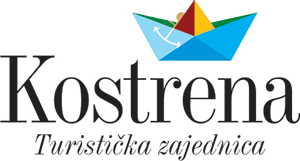Under the stone surface and under the feet of the numerous visitors to Kostrena and its inhabitants is a hidden underground world. Numerous cold submarine springs located close to the shore, springs of fresh water under the sea’s surface give the hint of numerous fissures in the underground area where fresh water from the hinterland finds its way towards the sea shore. On its way to the springs and submarine springs, the fresh water passes through larger fissures and areas connected to the surface by means of underground channels. If the underground channels are horizontal these areas are known as caves, and if they are vertical we speak about holes. Up till now, there are 8 known caves and holes in Kostrena amongst which is the longest Urinj cave and the deepest Mali štumbur cave. The Urinj cave is 115 metres long and 24 metres deep and belongs to the category of anchialine speleological facilities. Anchialine caves or holes are mainly located close to the sea and are provided with water accumulations which are fresh on the surface, and salty, in the deeper layers. In the Urinj cave there is precisely this kind of 15 m deep lake. The Mali štumbur cave is some 45 metres deep and it also has a smaller lake connected to the sea.
These kind of caves and holes that seemingly do not present favourable conditions for life are inhabited by especially adapted animals that have completely adapted to the cave habitat and which are known as troglobionts (land animals) and stygobionts (water animals). These animals that live in complete darkness have developed special adaptations such as long feelers and legs as well as special tactile fluff whilst they have lost their eyes and pigment that they no longer need. They also have a slow metabolism and ability of accumulation of fat reserves and live longer than their ground relatives. Taking into account that they live in conditions of constant darkness as well as a constant temperature and dampness, they have lost the day and night rhythm of their activities.
The Dinaric Alps have been recognized as the richest area of cave fauna in the world and contribution to this richness has been given to the interesting Kostrena cave animals. Following bio-speleological research numerous interesting cave animals have been determined that inhabit both water and land habitats. The male spider of the Stalita taenaria species has been found and for the first time in Croatia the Rhode aspinifera spider species was discovered, described and recognized in Slovenia. Within the pseudoscorpions the Neobisium insulare species has been determined only on the islands of Cres and Krk. Within terrestrial isopods the Alpioniscus strasseri specie has been determined as well as the Androniscus roseus buccariensis species found for the first time since 1930s. Within the group of Coleoptera the Bathysciotes khevenhuelleri species has been found and from a group of springtails the Troglopedetes pallidus species too. The water cave animals are especially interesting in the Kostrena area and inhabit brackish waters and lakes within the caves. Within the group of Crustacea: the Decapoda the Troglocaris anophthalmus species has been determined, amongst the group of Amphipoda the Niphargus and within the water isopods the Monolistra species has also been found. Even new species have been recognised which science had not previously discovered in other caves before and which after being described scientifically will become the endemic species of Kostrena. These include species such as plankton small crabs from the Calanoid group that are only known from the lakes of the Urinj cave.
Caves, their habitats and the animals that live there are extremely sensitive to changes occurring in the environment. There are numerous reasons that their survival might be jeopardised such as large technical, industrial and hydrological interventions within nature, landfill sites and sewage being left to seep into underground areas, as well as the physical jeopardizing of caves by quarries, infiltration of polluted precipitation, surface and wastewaters into the underground streams and other such circumstances. In the past a number of Kostrena caves have been completely ruined by large technical interventions such as Jama in the Martinšćica Bay whilst special attention should be dedicated to the preservation and protection of existing cave habitats and its fauna. The entire cave fauna and its habitat are protected by the Law on nature protection (NN 70/05, 139/08) and we should certainly devote additional efforts in order to preserve this valuable component of bio-diversity in Croatia.
